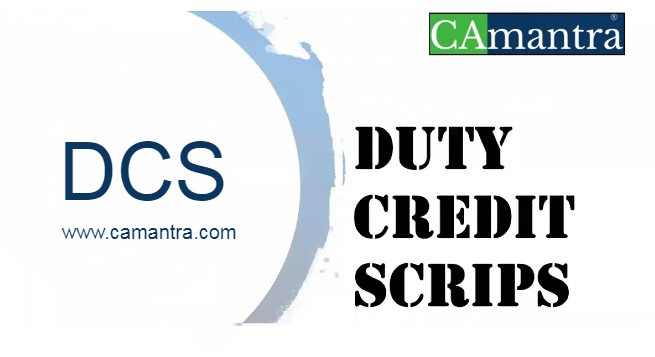In India’s Foreign Trade Policy, the term scrip has reference as ‘duty credit scrips’. DCS also known as Duty credit scrip is the most attractive export promotion incentive given by the government to exporters.
The objective and purpose of such schemes is to encourage exports by giving concessions to import tariff to exporters. Under the scrip, exporters can draw an import duty concession to a fixed percentage of their export value.
DCS can be used for the payment of Customs Duty and are issued to both the exporters of goods as well as exporters of services under the various schemes mentioned in the Foreign Trade Policy.
Duty credit scrips is an export promotion benefit powered and offered by the Government of India under the Foreign Trade Policy (FTP) 2015-20. Like other export benefits, the objective of DCS is to incentivize exporters so that they boost the inflow of foreign exchange to India.
A DCS provides tax incentives to the exporter on their exports, which can be used by exporters to set off their import duties. It is issued under the MEIS also known as Merchandise Exports from India Scheme, SEIS also known as Service Exports from India Scheme, and the Export Capital Goods Scheme.
Foreign Trade Policy 2015-20 lays down the features and the provisions related to DCS. The scheme is governed, implemented & administrated by the Government’s Ministry of Commerce & Industry, in association with the Directorate General of Foreign Trade (DGFT).
What are the Features of Duty Credit Scrip?
Below are the salient features of a duty credit scrip (DCS): –
- They are allotted to exporters by the DGFT (Director-General of Foreign Trade).
- The scrip brings duty deduction or non-payment of taxes for a specified amount in the scrip.
- The tax deduction or tax reduction amount is specified in the scrip.
- The tax reduction or scrip value amount is shown as a percentage of export turnover of the exporter.
- Under Foreign Trade Policy, 2015 the scrip value varies typically between 3 % – 5 %.
According to the Foreign Trade Policy-2015, the scrip is transferable to other persons. So, an exporter can transfer the scrip he/she obtained to the importer too.
What are the Benefits and Uses of Duty Credit Scrip?
Duty Credit Scrip issued to the exportercan use the Duty Credit Scrip for the payment of: –
- Basic Customs Duty
- Safeguard Duty
- Transitional Product specific safeguard duty
- Anti-dumping Duty
Previously these scrips could be used for the payment of all duties like Customs duty, Excise duty & Service Tax as well. But after the implementation of GST – Excise Duty & Service Tax have been subsumed in GST. Duty Credit Scrip cannot be used for the payment of GST.
Although most of the goods & services are now covered under ambit of GST, there are still items on which GST is not levied. These items on which GST is not levied are specified in the 4th Schedule to the Central Excise Act, 1944 covering specified petroleum products, tobacco etc. The DCS can be also be used for the payment of duties of excise, CVD/SAD on these items.
What is the Last Date of Filling of Application for Duty Credit Scrips (DCS)?
Application need to fill within a period of: –
- 12 months from the export order date or
- 3 months from the date of uploading shipping bill by DGFT server or Release of Shipping Bills for Non-EDI Shipping Bills whichever is later.

